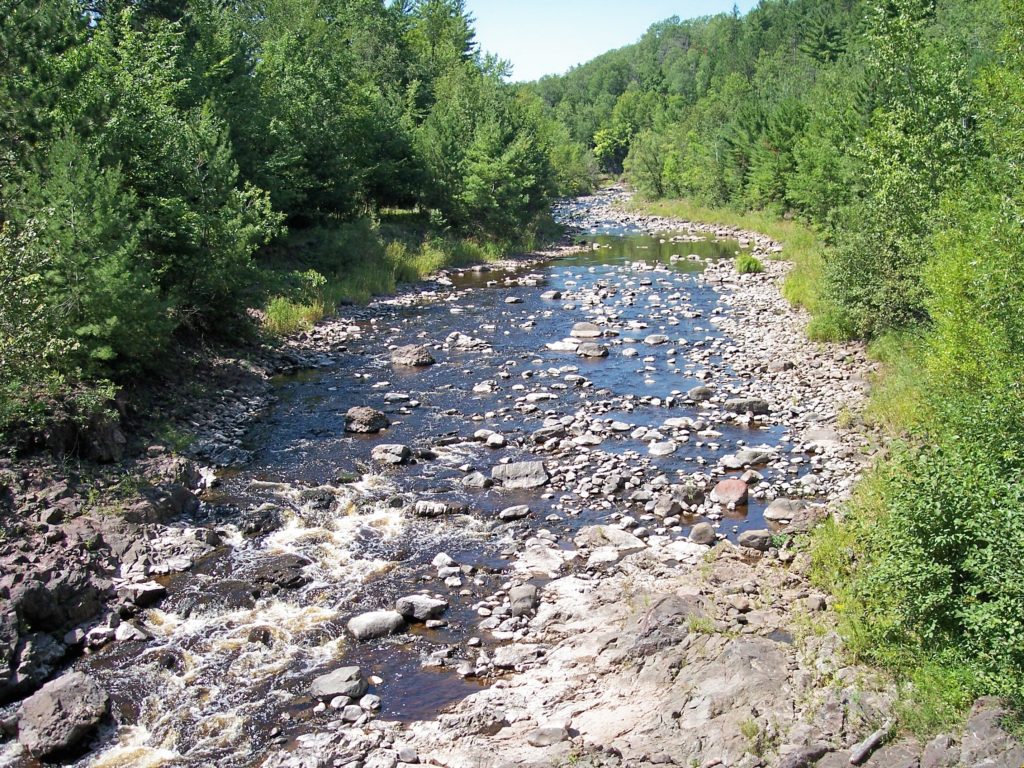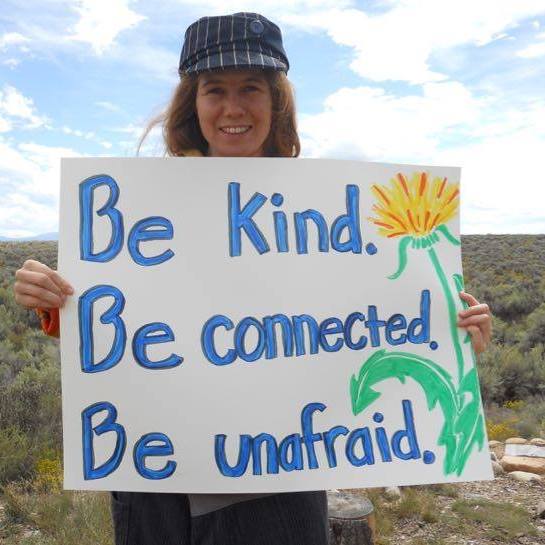
On July 22nd, 1996, members of the Anishinabe Ogichidaa (Chippewa) Nation living on the Bad River Reservation in White Pine, Michigan, blockaded trains carrying sulfuric acid to a nearby copper mining operation. A Toronto-based corporation hoped to inject 550 million gallons of acid into the mine to extract ore. The EPA granted permission for the experiment without requiring a hearing or an environmental impact statement. Walter Bresette, a Red Cliff Ojibwe activist and Indigenous chair of the EPA’S National Environmental Justice Advisory Council, resigned his position over the decision, and joined with the Native rights group Anishinabe Ogitchida, Ojibwe for “Protectors of the People,” on a new course of action.
Interestingly, the year before the EPA announced that sulfuric acid would be moved over rail through the Bad River Reservation, Two Bad River tribal members, Lawrence “Butch” Stone and Alan “Buster” Couture, began having dreams that an environmental disaster was coming to the Bad River Reservation.
Wikipedia reports: “While taking part in traditional sweats, Stone and Couture, among other Anishinabe Ogichidaa, began receiving messages through dreams and visions from Native American spirits and ancestors. The messages began a year before the Environmental Protection Agency published an announcement that the sulfide would be moved by rail over the reservation on Wisconsin Central Railroad tracks. In their dreams, Stone and Couture saw a train derail while crossing the Bad River Reservation, spilling a white powder into the river. The white powder caused disease and death of animals, plants and people, including the destruction of the sacred wild rice sloughs on the reservation at the delta where the Bad River meets Lake Superior. . . Neither Stone nor Couture knew what the white powder was what they had seen in their dreams until the EPA announcement of the trainload of sulfide crossing the Reservation.”
The Anishinabe Ogichidaa (Chippewa) decided to block the rail lines because they believed shipping the acid on the old rails would result in major accidents on the reservation, and also because the use of sulfuric acid in solution mining would cause seepage that could contaminate ground water and the lands upon which Anishinabe Ogichidaa had a right to hunt, fish, and gather according to the 1854 treaty.
“The Anishinabe Ogichidaa made a point of carrying out the blockade in a way that was consistent with their beliefs. They had prepared during the prior year with sweats and prayer. Before blockading the tracks, they and other Ogichidaa, consulted with spiritual leaders and tribal elders. On arriving at the tracks to begin the blockade, they prayed, and then laid out sacred ground in a way specified by spiritual leaders, to add strength to their actions, including a sacred fire near the tracks, singing and drum sessions on the tracks, tobacco placed in the four directions and eagle feather lances in the four directions on and near the tracks. Stone and Couture had vowed to Gichi Manitou, or Great Spirit, before the blockade, that they would be willing to sacrifice their lives if need be to stop the sulfide train from going through. ” – Wikipedia
Through July, the blockade continued to obstruct the tracks. Railroad officials had to delay shipments and find alternative transportation for the sulfuric acid. The protesters wanted to see safety documentation for the rails, bridges, and road, as well as an emergency response plan. On July 30th, the blockade continued, and the railroad officials asked the local sheriff to remove the protesters. The local sheriff refused.
On August 14, protesters permitted two trains to cross the blockade as long as the trains did not carry any hazardous materials. A few days later, an agreement was reached: the protestors agreed to give up the blockade in exchange for an EPA inquiry into the project. Non-hazardous trains resumed scheduled deliveries. The EPA believed that the research conducted by Michigan’s Department of Environmental Quality was sufficient, but consented to conduct an Environmental Analysis in 12-18 months. On October 4th, after the EPA announced the rails were up to federal standards, Walter Bressette announced he would conduct workshops teaching protesters how to “take apart the rails.”
Two weeks later, the mining company said it would discontinue its mining project due to the amount of time it would take the EPA to conduct the Environmental Analysis. The delay created too much expenditure and created uncertainty for the future of the mining project. In the face of legal battles over treaty rights, the company withdrew its mining-permit application. This ended the threat of sulfuric acid shipments and seepage from solution mining destroying the natural systems of the area, upon which the Anishinabe Ogichidaa (Chippewa) people hunt, fish, and gather.
This article is from Rivera Sun’s book of nonviolent histories that have made our world. Click here for more information.
______________________________________

Rivera Sun is a change-maker, a cultural creative, a protest novelist, and an advocate for nonviolence and social justice. She’s a love-based revolutionary and the author of The Dandelion Insurrection, The Way Between and ten other fiction, non-fiction and poetry books. Her essays and writings are syndicated by Peace Voice, and have appeared in over a hundred journals nationwide. Rivera Sun speaks and facilitates workshops in strategy for nonviolent change across the country and around the world. She connects the dots between the issues, shares solutionary ideas, and inspires people to step up to the challenge of being a part of the story of change in our times. www.riverasun.com
Learn more here: https://en.wikipedia.org/wiki/Bad_River_Train_Blockade
Photo Credit: “The Bad River in Copper Falls State Park” by Tim Kiser (w:User:Malepheasant) – Self-photographed, CC BY-SA 2.5, https://commons.wikimedia.org/w/index.php?curid=1661749